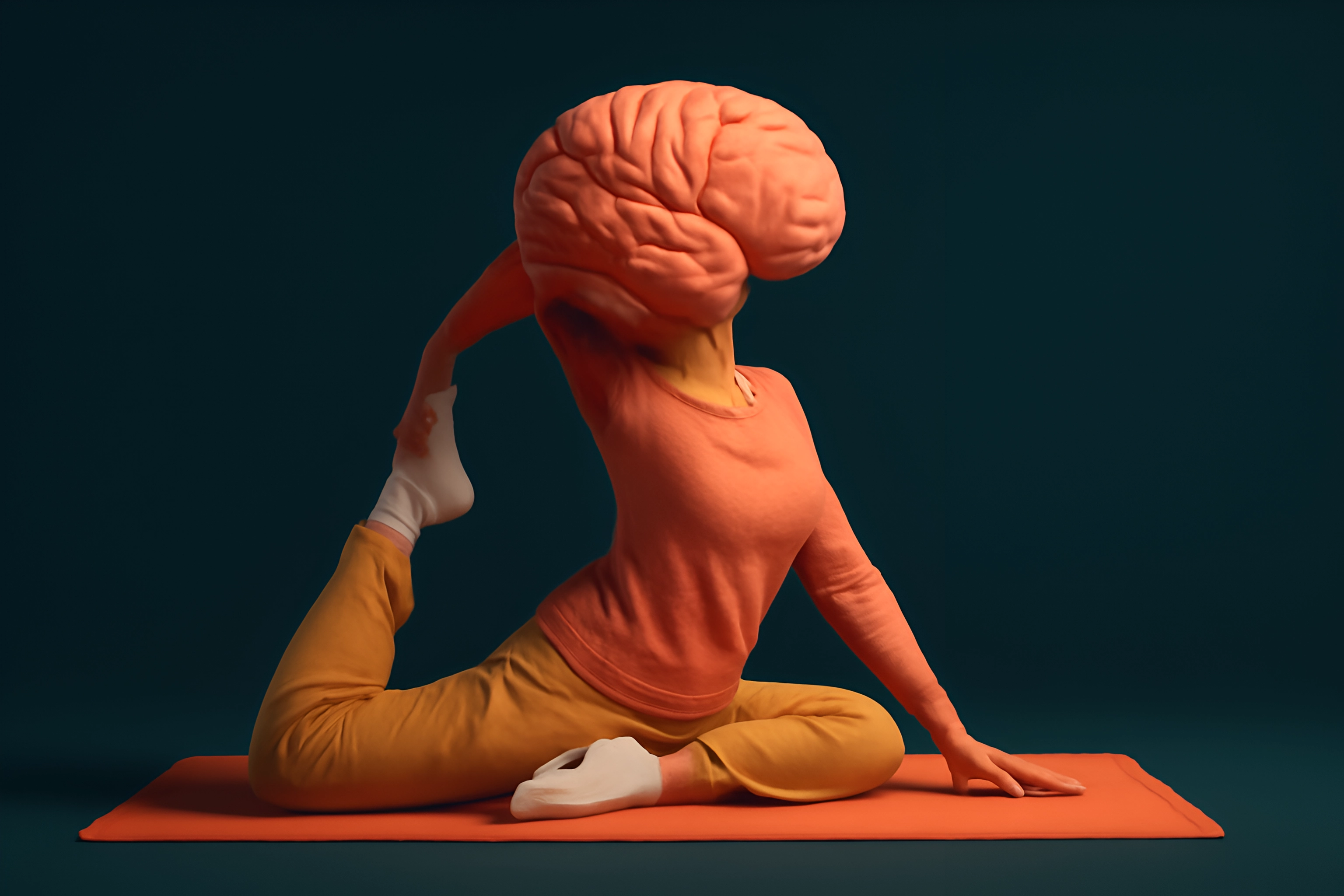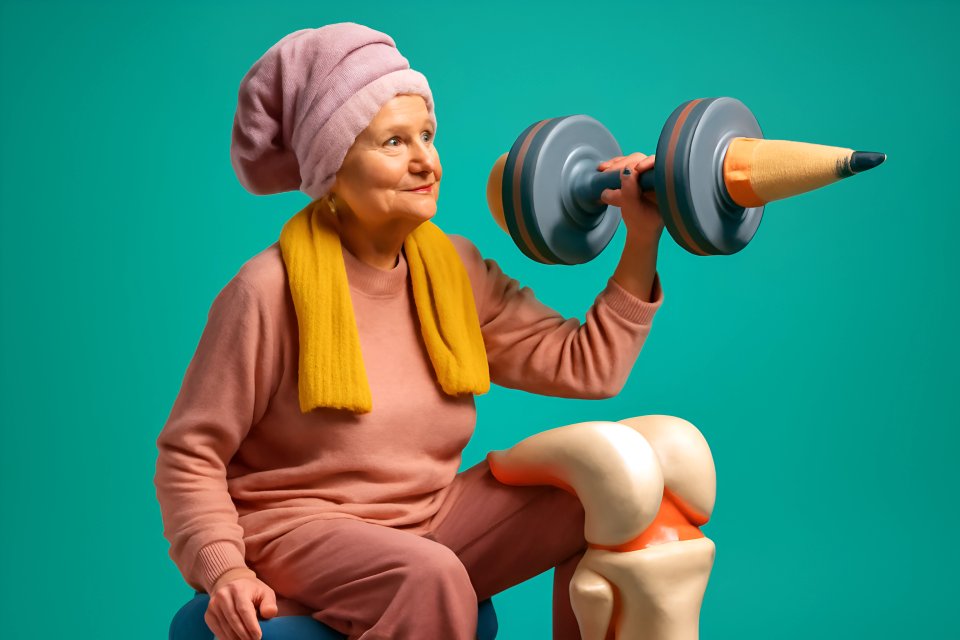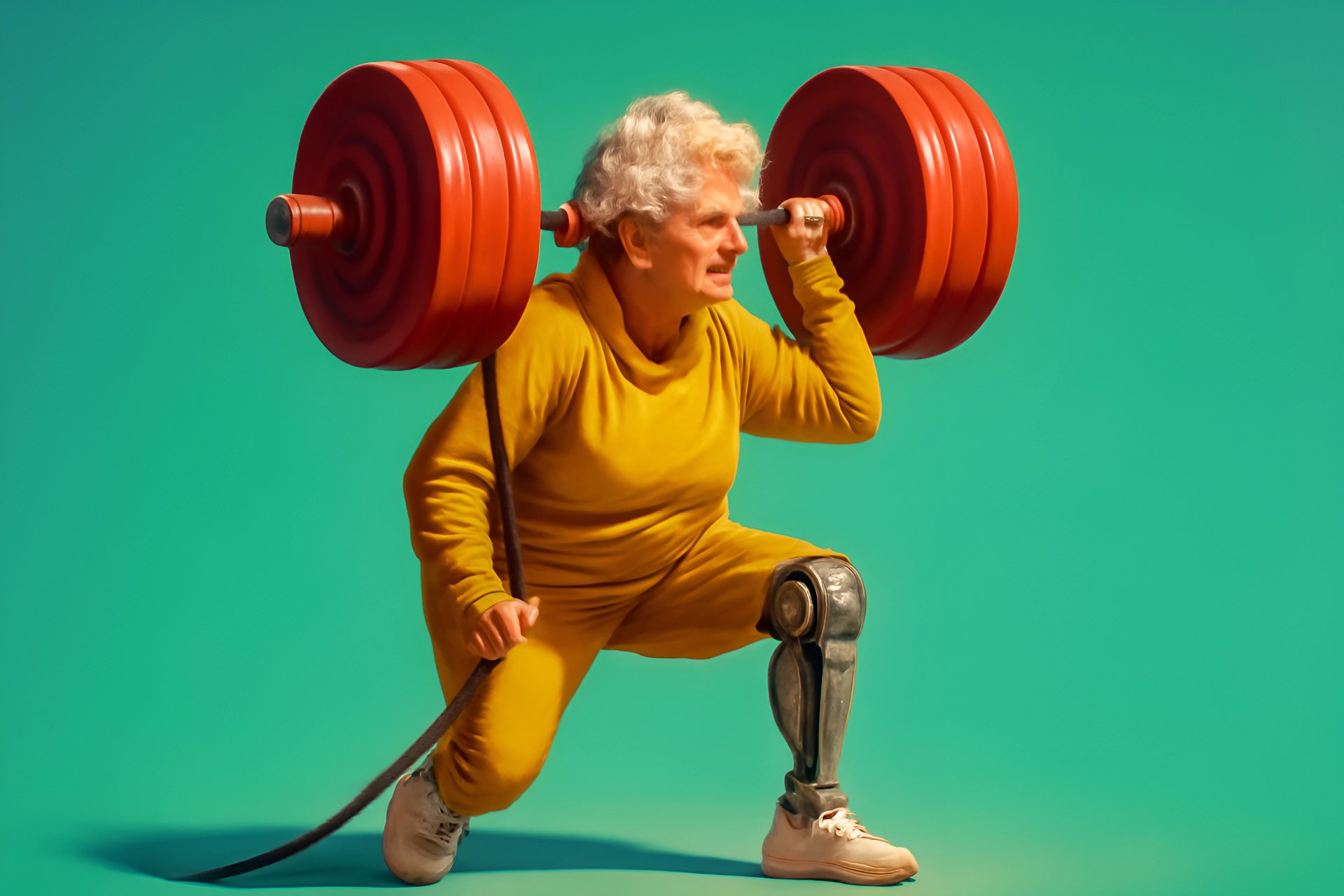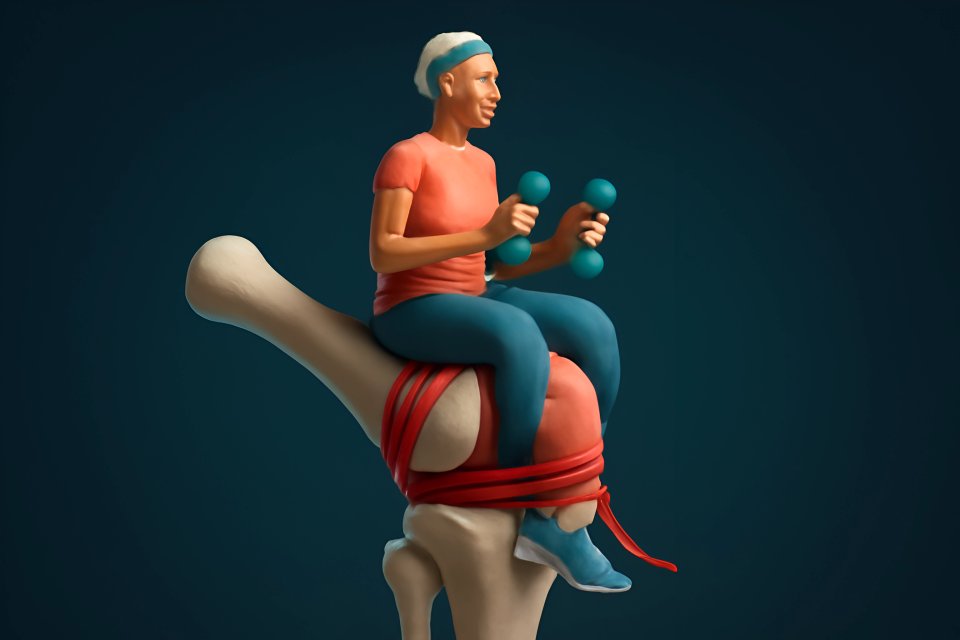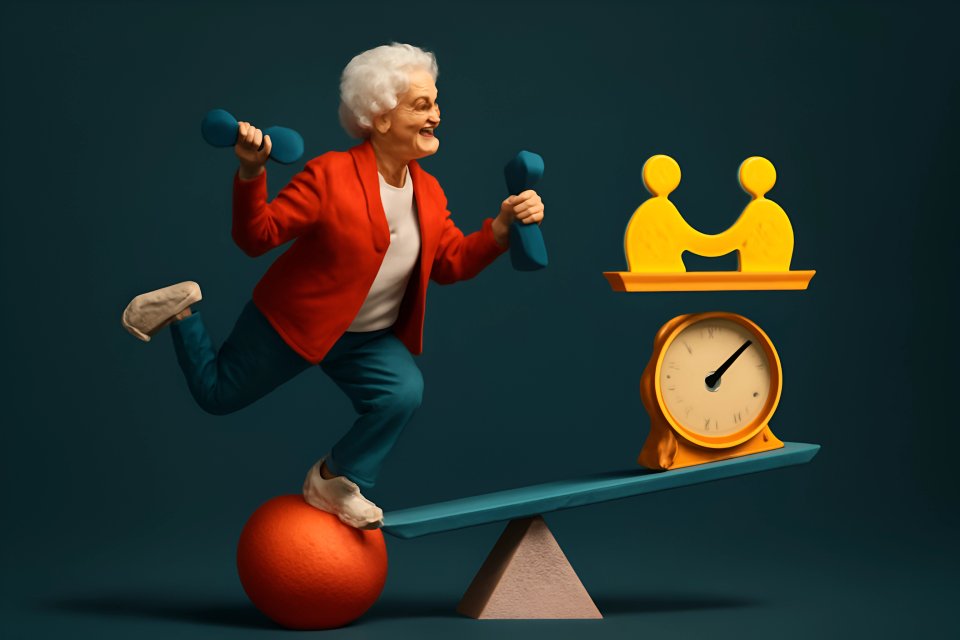
Introduction: The Evolution of a Fit Life
You've always been active. You’ve logged the miles, loved the intensity, and felt the rush of a good, hard workout. But lately, your knees, hips, and back are sending you a different message—a whisper that’s getting harder to ignore.
This isn't a signal to stop. It's a call to evolve. Your history as a fit, determined individual is the foundation for this next, smarter chapter. This transition isn't a step back; it's a strategic move to ensure you can stay in the game for life, feeling strong, capable, and pain-free.
The solution is gentle cardio, a powerful approach to fitness that’s about working smarter, not necessarily softer. It’s the key to achieving your health goals without the punishing physical toll. This guide will provide a clear, step-by-step roadmap for making a safe and effective transition from high-impact workouts over 50 to gentle cardio for seniors, ensuring you protect your joints while strengthening your heart.
Why Make the Switch? Listening to Your Body After 50
The truth is, years of pounding the pavement or hitting it hard in HIIT classes have a cumulative effect. That high-impact stress, which once felt invigorating, can lead to significant wear and tear on the cartilage that cushions your joints, especially in the knees, hips, and spine. As we age, recovery times naturally lengthen, and the risk of stress fractures or aggravating old injuries increases, making that "no pain, no gain" mantra a dangerous liability.
But here’s the secret the fittest people over 50 have discovered: you don't have to sacrifice your cardiovascular health to save your joints. The benefits of low-impact, gentle cardio are immense. You get the powerful joint protection that preserves your mobility for the long haul, allowing you to keep doing the things you love. According to the American Heart Association, older adults can reap tremendous cardiovascular benefits from consistent, moderate-intensity activity, proving you can still get your heart pumping without the jarring impact.
This smarter approach dramatically reduces your risk of injury, allowing for more consistent training and faster recovery. Less physical stress means your body can repair and rebuild more efficiently, so you feel energized for your next workout, not depleted by it. These are the kind of seniors safe workouts that build a foundation for decades of vibrant, active living, proving that the best fitness plan is the one you can stick with for a lifetime.
Your 4-Step Plan to Safely Transition from High-Impact Workouts
Making this change isn’t about slamming on the brakes. It’s a gradual, mindful process of blending the old with the new until you find a rhythm that feels incredible. Think of it as fine-tuning your engine for a long and powerful journey ahead.
Step 1: Assess Your Starting Point
Before you change a single thing, you must become an expert on your own body. This starts with a crucial conversation. The Mayo Clinic strongly advises consulting a doctor or physical therapist before making significant changes to your exercise routine, especially if you're managing existing pain or a chronic condition.
Once you have professional clearance, it’s time for a personal inventory. Pay close attention for a week. Which movements trigger that familiar ache in your knee? When does your back feel most stiff? This isn't about judgment; it's about gathering the critical data you need to build a smarter, more personalized plan.
This assessment phase is your foundation for success. For those dealing with specific aches, exploring gentle workout modifications for seniors recovering from injury can provide even more tailored strategies to ensure you move safely and confidently.
Step 2: The "Swap and Blend" Method
Now, you’ll begin the transition using a simple but effective strategy: gradually replace your high-impact sessions with low-impact alternatives. There’s no need to quit your favorite run cold turkey. Instead, you’ll slowly introduce your body to new, joint-friendly movements.
Here’s how it works. If you currently run three times a week, start by swapping just one of those runs for a 45-minute power walk, a session on a stationary bike, or a swim. Do this for a week or two, noticing how your body feels. The following weeks, you can swap a second high-impact day, continuing this pattern until you’ve found a new balance that feels both challenging and sustainable.
This methodical approach prevents the shock of an abrupt change and allows your body to adapt gracefully. It’s the core principle behind learning how to build a low-impact exercise routine over 50, ensuring your new habits stick for the long term.
Step 3: Master the Art of Modification
You don’t have to give up the feel of an intense workout, only the joint-jarring impact. Modification is your new superpower. It allows you to get a fantastic, heart-pumping workout by simply tweaking the mechanics of high-impact movements.
Think about your old favorites. Instead of punishing Jumping Jacks, you can do Step-Out Jacks, which keep one foot on the ground at all times. Instead of High Knees that pound your joints, you can switch to powerful High-Knee Marches, engaging your core and raising your heart rate without the shock.
Even your treadmill workout can be transformed. Rather than running, try Power Walking on a steep incline to challenge your cardiovascular system and build leg strength. These simple changes deliver incredible results, proving that intensity is about effort, not impact.
Step 4: Focus on Form and Foundational Strength
Excellent form is non-negotiable, whether you’re lifting heavy or walking briskly. As you transition to gentle cardio, it’s the perfect time to double down on your technique. Proper alignment protects your joints and ensures you’re engaging the right muscles for maximum benefit and minimal risk.
This is also where foundational strength becomes your greatest ally. A strong core, stable hips, and flexible muscles create a supportive scaffold for your entire body, protecting your spine and knees during any activity. Integrating practices like yoga, Pilates, or targeted strength training is essential.
Building this underlying strength is what makes your new cardio routine truly effective and safe. To get started, you can explore practical strength training modifications for seniors with joint pain to create a holistic, joint-friendly fitness plan.
The Best Gentle Cardio Workouts for Older Adults
Ready to discover your new favorite way to move? These workouts are effective, accessible, and designed to make you feel strong and energized, proving that gentle on the joints doesn't mean easy on the effort. They are the cornerstone of any plan for mastering sustainable low-impact workouts for seniors.
Workout 1: Brisk Walking / Power Walking
Never underestimate the power of walking. It’s one of the most accessible and effective forms of exercise, and it’s a weight-bearing activity, which is crucial for maintaining bone density. The beauty of walking is its scalability; you can easily increase the intensity by picking up your pace, finding hills, or adding Nordic walking poles.
To get the most out of your walk, focus on your form. Swing your arms purposefully to help elevate your heart rate and engage your upper body. Concentrate on a smooth, rolling heel-to-toe foot strike to protect your feet and ankles.
This simple, powerful exercise is a perfect starting point. For more ideas on how to incorporate it into a routine, check out these low-impact cardio ideas for heart-healthy exercise.
Workout 2: Swimming & Water Aerobics
The water is your body’s best friend, especially if you have arthritis or significant joint pain. The buoyancy of water creates a zero-impact environment, allowing you to move freely without any stress on your joints. It’s a true full-body workout, as the water provides gentle resistance from all directions, building both cardiovascular endurance and muscular strength.
Many community centers offer water aerobics classes, which are a fantastic way to stay motivated and social. As this guide on balancing social wellbeing and physical health explains, exercising with others can be a powerful motivator.
For a new challenge, try aqua jogging in the deep end of the pool. It perfectly simulates the motion of running without a single bit of impact, giving you an incredible cardio workout.
Workout 3: Cycling (Stationary or Outdoor)
Cycling is a phenomenal non-weight-bearing exercise that builds serious leg strength and cardiovascular health. A stationary bike is a particularly safe and controlled option, allowing you to work out regardless of the weather and without worrying about traffic or terrain. You can find excellent guided workouts online, like this chair cardio workout that incorporates similar seated movements.
Proper bike fit is absolutely critical to protect your body. Whether you're indoors or out, make sure your seat height is adjusted so that your knee has a slight bend (about 5-10 degrees) at the bottom of the pedal stroke. This simple adjustment prevents knee strain and ensures an efficient, powerful ride.
This is a cornerstone of any ultimate guide to joint-friendly exercise, offering a perfect blend of intensity and protection.
Workout 4: Elliptical Trainer
If you miss the feeling of running, the elliptical trainer may become your new go-to machine. It’s brilliantly designed to mimic the running motion without the damaging impact, providing a smooth, gliding movement that’s easy on the knees and hips. By actively using the moving handles, you can engage your upper body for a fantastic full-body workout.
To keep things interesting and effective, don’t just set it and forget it. Constantly vary the resistance and incline throughout your workout. This not only challenges different muscle groups but also keeps your heart rate elevated for maximum cardiovascular benefit.
This machine is a staple in gyms for a reason. It delivers a high-intensity feel with low-impact reality.
Workout 5: Low-Impact Bodyweight Circuits
You don’t need a gym to get a great cardio workout. Low-impact bodyweight circuits combine strength and cardio into one efficient session that you can do right in your living room. These routines are perfect for busy days and are incredibly effective at building functional fitness.
A great example is the kind of routine you'll find in this quick 10-minute low-impact cardio standing workout, which shows how to string moves together. Try a simple circuit: perform each of the following exercises for 45 seconds, followed by 15 seconds of rest.
Step-Out JacksBodyweight SquatsGlute BridgesWall Push-ups
Repeat the entire circuit 3-4 times for a complete workout that will leave you feeling strong and accomplished.
Putting It All Together: A Sample Weekly Schedule
Seeing how the "Swap and Blend" method works in practice can make all the difference. Below is a sample schedule showing how a typical high-impact week can be transformed into a powerful, joint-friendly plan that protects your body while keeping you incredibly fit.
| Day | Old High-Impact Plan | New Gentle Cardio Plan |
|---|---|---|
| Mon | 5k Run | 45-min Brisk Walk (Hills) |
| Tues | Strength Training | Strength Training (No Change) |
| Wed | HIIT Class | 30-min Stationary Cycling |
| Thurs | Rest | Active Recovery (Stretching/Yoga) |
| Fri | 3k Run | 40-min Water Aerobics Class |
| Sat | Long Walk | Long Walk (No Change) |
| Sun | Rest | Rest |
Conclusion: Embrace Your Strongest, Healthiest Chapter Yet
Let’s be clear: transitioning to gentle cardio is not a retreat. It is a strategic, powerful, and proactive choice for your long-term health and vitality. It’s about honoring the body that has carried you this far and equipping it to carry you powerfully into the future. By listening to its signals, being patient with the process, and celebrating consistent, pain-free movement, you are taking control of your fitness destiny.
Your fitness journey is a marathon, not a sprint. By choosing smarter, gentler ways to move, you're ensuring you can stay active, vibrant, and strong for all the chapters yet to come. You are not slowing down; you are getting smarter, stronger, and more resilient than ever before.
What is your favorite gentle cardio workout? Share your tips and experiences in the comments below to inspire others!










